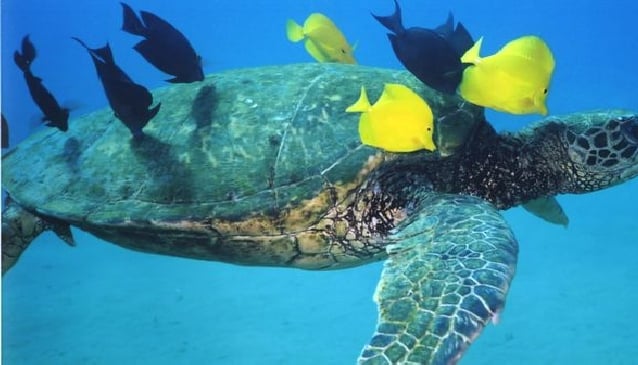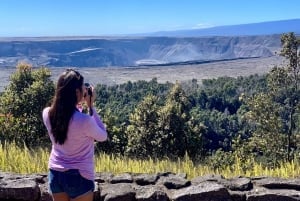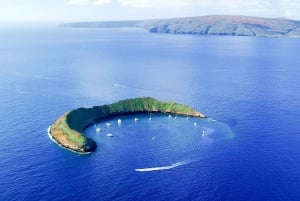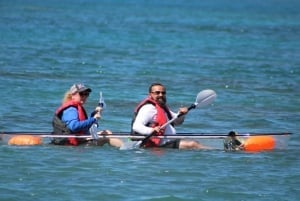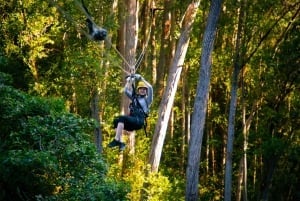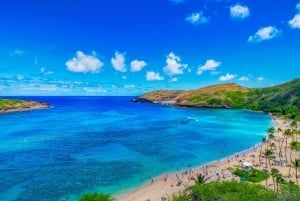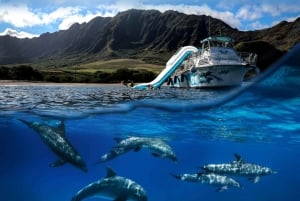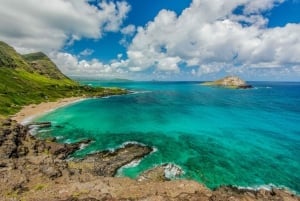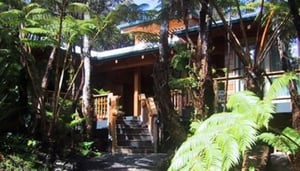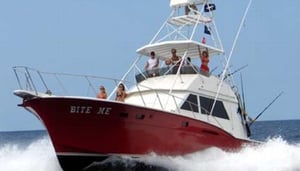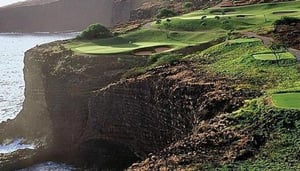A Picture Perfect Postcard
The best way of experiencing Hanauma Bay is by placing yourself beneath the water.
Book Top Experiences and Tours in Hawaii:
If youʻre booking your trip to Hawaii last minute, we have you covered. Below are some of the top tours and experiences!- Big Island: Volcanoes, Waterfalls, & Coffee Farm Day-Trip
- Oahu: Swim with Dolphins, Turtle Snorkel Tour and Waterslide
- South Maui: Molokini & Turtle Town Snorkeling Tour with Meal
- Olowalu: Guided Clear Kayak Tour - Unlimited
- Big Island: Full-Day Kohala Zipline and Waterfall Adventure
There are beaches, and then there are beaches. There are the crunchy stretches of pebble and sand that you and I know, those that we tarnish with our bulbous rolls of naked flesh buttered with tanning lotion, those that we comb for shells and subject to a daily upheaval in landscape before the sea crawls back to wipe its slate clean. Then there are the beaches that all others aspire to be, those mythical places that we only see on postcards and can’t be absolutely sure exist, shimmering visions that have come to define paradise.
But they do exist, and we can prove it.
does not want for decent beaches, which is hardly surprising considering it is actually an archipelago of islands that sits in the middle of the Pacific Ocean and boasts approximately 750 miles of coastline. Indeed, the image of hunchbacked palm trees and wide golden sands has become synonymous with the merest utterance of Hawaii attractions, not to mention the toned torsos of a devoted surfing population for whom the youngest of America’s United States is a mecca.
Graciously, Hawaii’s government created a law that states its beaches are to be free and open to the public, which means you and I can lay our Disney beach towels pretty much anywhere we like. There are, however, a handful of sandy stretches that are reserved for special purposes, one of which is that which frames Hanauma Bay. Visitors to this cove are charged a $1 parking fee (per car) along with a $7.50 entrance fee (per person). For what do they pay this price? A little slice of heaven that was once a sacred fishing spot for Hawaiian royalty, and, significantly, is now a nature preserve to which all entrance fees go in support.








The bay is home to a diverse variety of wildlife with names that beg for an etymological explanation, such as the triggerfish, surgeonfish, goatfish and tang. Otherwise you might see green sea turtles, jellyfish, eels, octopus and crabs, not to mention another 450 varieties of fish. It’s important to keep your distance, however, for the rules of the nature preserve dictate that the wildlife should not be disturbed or touched, all of which is covered in a 10 minute video played to each visitor upon entrance to the bay. Besides the wholesome message, it features a number of fantastic shots of the creatures you’re likely to see!
The best way of experiencing Hanauma Bay is by placing yourself beneath the water, and the best way of doing this is to hire a snorkel ($7-$10) and dive right in, leaving behind you a golden curve of sun-baked sand along with the long line of drool that it’ll make you produce. Beyond the swarming shoals of fish and the somnolently sauntering turtles, you will discover the bay’s kaleidoscopic coral reef, a carpet of jagged organisms that many of the park’s wildlife call home.
The nature preserve is open from 06:00 to 19:00 during the summer and 06:00 to 18:00 during the winter, with the opportunity to night snorkel on the second and fourth Saturday of each month when the beach is open until 22:00. We recommend aiming to arrive either early morning or on the crust of the second wave of visitors in the middle of the afternoon, for the park closes its gates once capacity is reached.
Inevitably, Hanauma Bay is no longer a well-kept secret, thanks in no small part to articles like this telling people like you to visit. Nevertheless, it remains one of Hawaii’s most cosmic days out, and should be a prominent feature on any visitor’s itinerary. Bear in mind, however, that the preserve is closed on Tuesdays to allow the wildlife free reign over their habitat, although exceptions have been made for Barack Obama (so, Barack, if you’re reading, ignore this whole paragraph).


